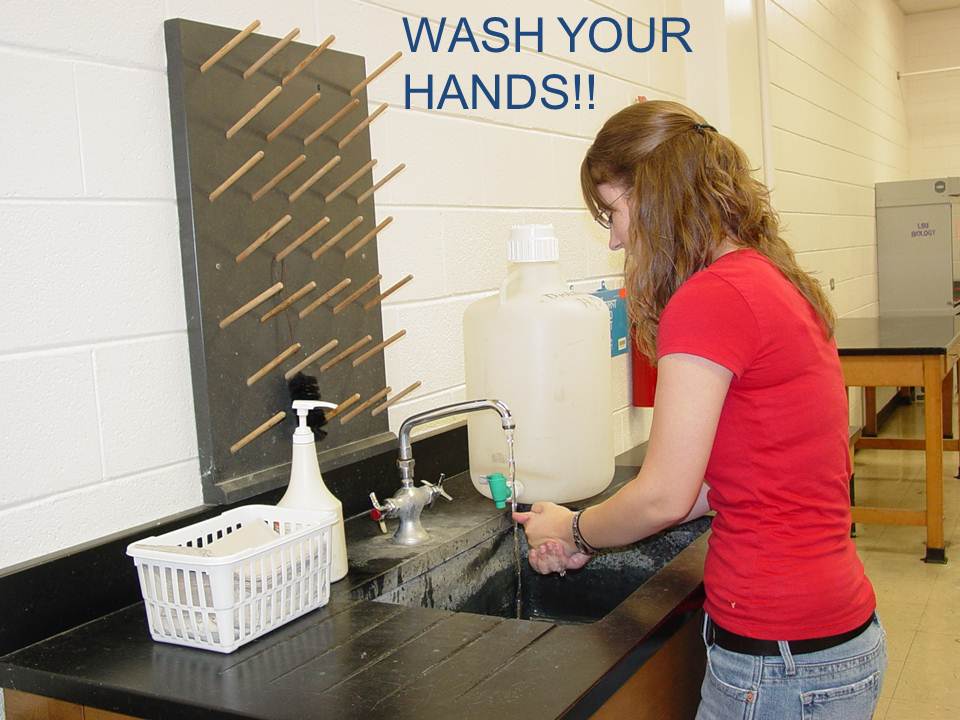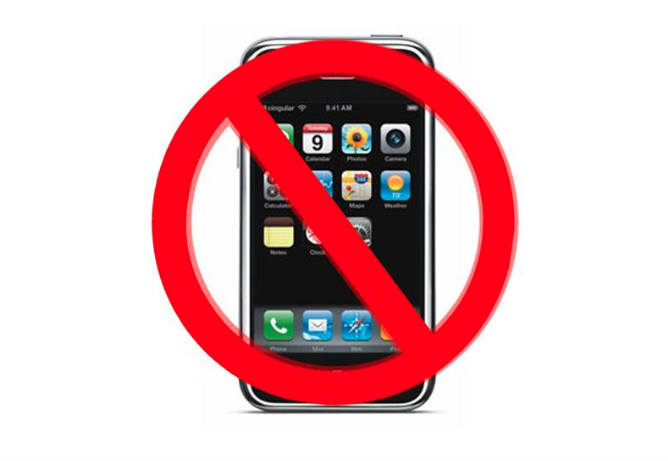Chapter 2. Laboratory Safety
Emergency Contact Information
In case of emergency, have someone contact the appropriate people using the following emergency phone numbers:
LSU Emergency (Fire, Police, Ambulance): 911 (on a campus phone)
LSU Police: 578-3231
Student Health Center: 578-6271
There is a phone in either the lab or the adjacent prep room.
General Background Information
Proper laboratory techniques and procedures are essential for creating a laboratory environment that is both productive and safe. Many of the laboratory exercises in this manual involve the use of materials or procedures that can be hazardous to you and others in the laboratory if not handled or performed correctly.
Thoroughly read the following information on laboratory safety equipment and procedures.
After reading the safety procedures, you must read and accept the “Contract to Follow the Laboratory Safety Procedures.” You will not be allowed to attend the laboratory until you have read and acknowledged that you accept to follow the contract.
Knowing where laboratory safety equipment is and how to use it can be critical to effectively responding to a laboratory accident.
Laboratory Safety: Procedures
- Many laboratory accidents are the result of poor preparation. Carefully reading and understanding what you will be doing in the laboratory will allow you to avoid many possible accidents.
- Your lab instructor is responsible for the safe and effective operation of the lab. If you have any conditions or special needs that may put you at greater risk in the laboratory (if you are pregnant, color-blind, allergic to any insects or latex, taking immunosuppressive drugs, or have a medical condition that may require special precautionary measures), you should notify the laboratory instructor before the laboratory begins.
- Wearing the appropriate clothing is an important protection preparation for lab. Always wear closed-toe shoes in the laboratory. SANDALS ARE NOT ACCEPTABLE FOOTWEAR.

- Exercising care for long hair can prevent many lab-related accidents. Long hair should be tied back to keep it out of your eyes and away from anything that could result in harm.
- Avoiding certain behaviors in lab can help keep you safe. Do not eat, drink, smoke, or apply cosmetics in the laboratory. Food and drinks may never be brought into the laboratories.

- Since your hands may come in contact with many things before, during, and after the lab, always wash your hands prior to and immediately after leaving the laboratory. This will prevent external sources of contamination that could alter the result of your experiment. It will also keep you safe from anything you have come in contact with during the lab.

- Come to lab prepared to do the work required and stay focused on the job. Any behavior that distracts you, your group members, or others in the lab could result in possible harm. This includes unauthorized use of cell phones.

- While you will often be working in groups, each member should be familiar with all aspects of the lab exercises. This not only may help keep you safe, but it will also help ensure your lab runs more smoothly and will likely be of benefit to earning a better grade in the course.
- Accurate and complete notes should be kept in your laboratory notebook during each experiment. This not only provides the basis for safety but can also aid in the completion of many of the post-laboratory events during the course.
- Read the labels on containers prior to removing any materials from containers. NEVER RETURN MATERIALS TO THE STOCK CONTAINERS. Discard used chemicals and solutions in the appropriate manner. If you are not sure of how to dispose of any materials, be sure to ask your laboratory instructor prior to discarding materials.
- Discard broken glassware in the special container marked “Broken Glass.” Please do not discard paper or non-glass materials (e.g., plastic pipettes) or biohazardous material in this container. This is important not only for the safety of people working in the lab, but also for the custodians that are responsible for cleaning the rooms.

- All “Sharps” (small sharp glass, metal or plastic objects, e.g., coverslips, razor blades) must be placed in the “Sharps Containers” located in each room.
- Place all gloves, swabs, disposable pipettes, etc., that may have contacted blood, bacteria, or bacterial cultures in a disposable autoclave bag (biohazard bag). These materials will be sterilized prior to disposal. This is important not only for the safety of people working in the lab, but also for the custodians that are responsible for cleaning the rooms.

- Glassware that has come in contact with a biohazardous material (e.g., blood) should be rinsed with a 10% bleach solution and placed in a location designated by your lab instructor.
- When using hot plates, note that there is no visible sign that they are hot (e.g., they do not glow when hot). Always assume that they are hot.
- Report all accidents and chemical spills to your instructor immediately.
- Do not perform any unauthorized experiments.
- Leave the laboratory clean and organized for the next students. This includes:
- returning materials to the proper place.
- removing labels on glass tubes.
- disposing of any waste materials in the appropriate trash receptacle.

Laboratory Safety: Equipment
- Eyewash: The eyewash is located in the preparation room adjacent to the laboratory. To use this, turn on the cold water faucet and then pull the knob located in the center of the eyewash unit. Hold your eye or eyes open and place them in the stream(s) of water. The wash should be continued for a minimum of 15 minutes and then you should go immediately to the Student Health Center.
Here is a video demonstrating the use of an eyewash station:
- Fire Extinguisher: The fire extinguisher and fire blanket are located along the rear wall of the laboratory. Please read the directions before using.

- First Aid Kit: A first aid kit is located in the laboratory. This can be used to treat minor cuts and abrasions in the lab. After using this kit you should go to the Student Health Center for additional treatment.
- Safety Glasses: Safety glasses are available in the laboratory. Your lab instructor will advise you when it is necessary to use these.
- Gloves: Gloves are available during all laboratory exercises that require their use. Your lab instructor will advise you when it is necessary to use these.